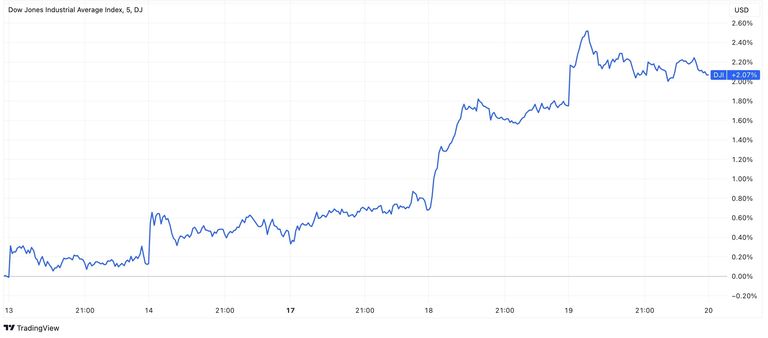Leading US banks published their Q2 financial reports and blew analyst forecasts, impressively outperforming even the formidable Scott Pilgrim in his battles with evil exes. How is it possible in such uncertain times – let’s delve into why banks have been so efficient in the second quarter and explore what we can expect from their stocks.
Major US banks, namely Bank of America, JPMorgan, Citibank, Wells Fargo, and Goldman Sachs, opened earnings season in the US. After that, the stocks of these banks soared in every single case, as illustrated in the chart below. Also, if you want to create a list of shares based on your own criteria, you can use stock screener, a tool that facilitates a faster and more effective search process.

Let’s concentrate on revenue and earnings per share, as these are statistics that investors frequently pay special attention to. We'll go through the results starting from the top of the chart.
Bank of America. Revenue – $25.2 bln, exceeding the forecast by 0.88% and marking an 11% growth compared to Q2 2022. Earnings per share (EPS) – $0.88, surpassing estimates by 4.78% and showing a 20% increase from Q2 2022.
Wells Fargo. Revenue – $20.53 bln, surpassing the forecast by 1.82% and achieving a 20% increase compared to the result of Q2 2022. Earnings per share (EPS) – $1.25, exceeding estimates by 8.21% and showing a 69% growth from Q2 2022.
JPMorgan. Revenue – $41.31 bln, surpassing the forecast by 6.96% and exhibiting a 34% growth compared to Q2 2022. Earnings per share (EPS) – $4.75, exceeding estimates by 20.65% and showing a 72% increase from Q2 2022.
Goldman Sachs. Revenue – $10.89 bln, surpassing the forecast by 2.22%, but 8% lower than Q2 2022. Earnings per share (EPS) – $3.08, falling short of estimates by 2.32% and showing a 60% decrease from Q2 2022.
Citibank. Revenue – $19.44 bln, slightly surpassing the forecast by 0.49%, but showing a 1% decline compared to Q2 2022. Earnings per share (EPS) – $1.33, surpassing estimates by 2.21%, but showing a 40% decrease from Q2 2022
As you can see, most of the banks exceeded the expectations. And an important role here is for the Fed. Its hawkish policy allowed banks to profit significantly from higher interest rates. In other words, just take low rates on deposits, charge high rates on loans, and enjoy the process.
The banks' reports also had a positive impact on indices, with the Dow Jones index surging in conjunction with the release of this information.

What might be more essential for investors is the answer to the question: what’s next? Especially when it’s a moment for the Federal Reserve to end its hiking cycle. So, let’s take a look at consensus forecasts.
Bank of America is potentially expected to grow by +12% in the next 12 months. Wells Fargo is predicted to see an increase of +8.5%. JPMorgan is anticipated to grow by +10%. Goldman Sachs is expected to see growth of +11%. Citibank is projected to grow by +17%.
The forecasts are almost as brilliant as this week's reports. But analyst opinions change regularly – daily, weekly, and monthly. Therefore, it would be unwise to assume that merely building a portfolio with bank stocks and doing nothing else will lead to success – neither investing nor trading works like this. Reaching success is only possible with your own analysis and diversification.

